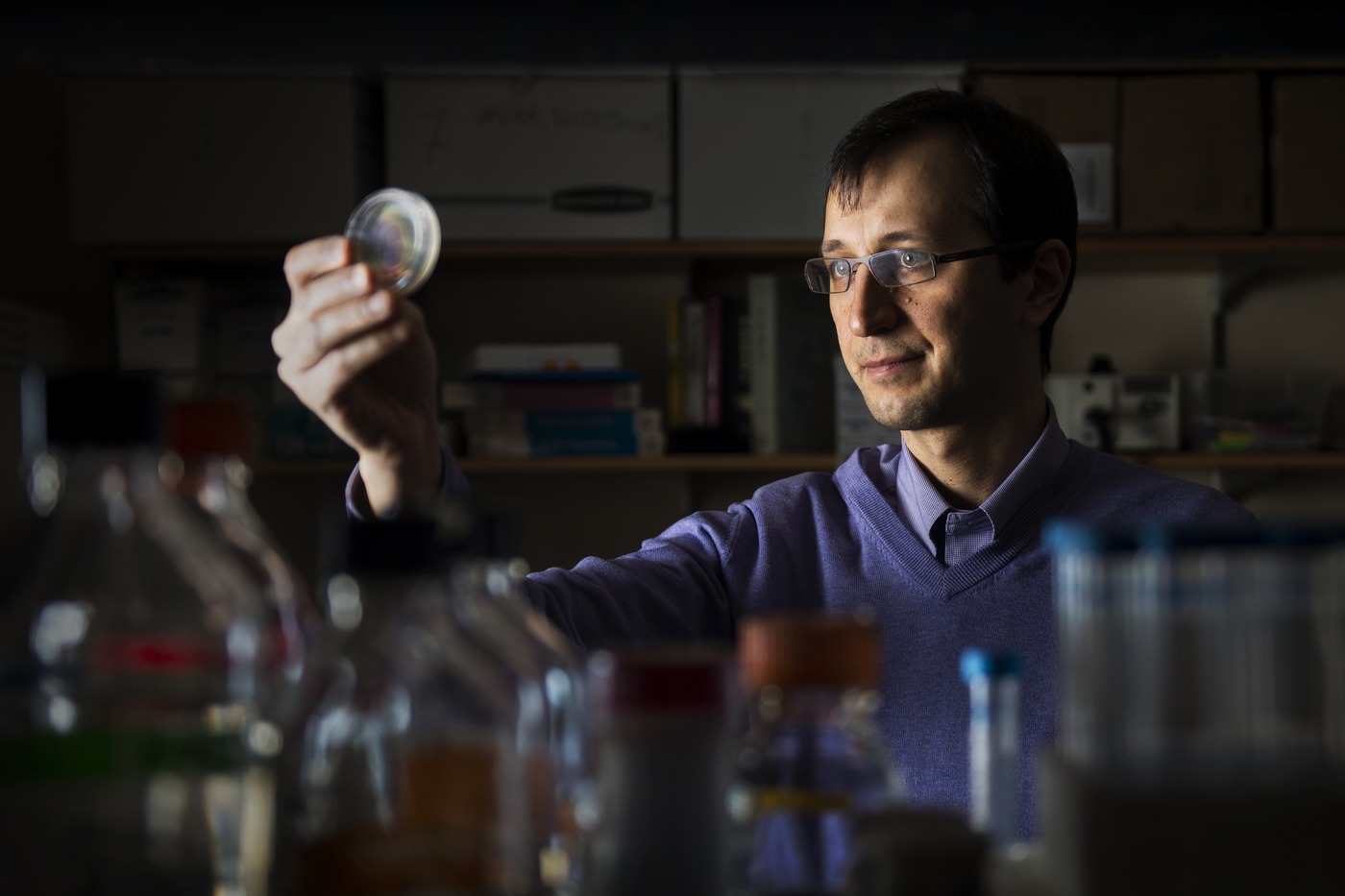by Thea Singer
In 2010, when President Barack Obama spoke at Northeastern in support of Martha Coakely’s gubernatorial bid, he looked markedly different from the candidate we’d seen on the campaign trail just two years earlier: His black hair was salted with white, his face thinner, his wrinkles more deeply etched.
Assistant professor Javier Apfeld, who joined the College of Science this fall, wants to understand that aging process. With worms as his subjects, he plumbs the cellular mechanisms driving the complex protein interactions regulating lifespan, some of which—remarkably—have been conserved through evolution all the way from his microscopicCaenorhabditis elegans to us.
“What controls how long an organism lives?” he asks. “I study that question in worms, which are a great model because they live only about two weeks, so I can do experiments quickly and relatively inexpensively. Of course, worms are worms—they’re not mice, they’re not humans. But many of the genes that affect lifespan in worms affect lifespan in other organisms. Worms are, in many ways, leading the way in understanding aging.”
In his lab at Northeastern, Apfeld manipulates the worms’ genes and environment in an attempt to learn what factors lengthen or shorten their lives—and even whether there’s a limit to how long they can live. The answers could provide clues to increasing our own longevity.
A market for electrons
Apfeld didn’t so much choose the aging field as the field chose him. As a graduate student at the University of California, San Francisco, he heard molecular biologist Cynthia Kenyon describe how worms with a mutation in a particular gene had double the lifespan of those without it. “It was unbelievable.” he says. “My head was exploding.”
That enthusiasm extends to his current research: How “oxidation” and “reduction”—the trading of electrons between protein molecules—relates to aging. He thinks of the exchange, dubbed “redox,” as a “market for electrons in the cell.”
Were that market to experience free fall, mayhem could ensue: Research has linked increased protein oxidation to age-related diseases such as cancer, heart disease, diabetes, and Alzheimer’s and Parkinson’s diseases.
“We are trying to understand the causes of aging by linking the mechanisms that control the oxidation of proteins at the cellular level with the mechanisms that determine the lifespan of the whole organism,” Apfeld says.
Digging deeper
It’s a daunting task. A breakthrough study that Apfeld co-authored while an instructor at Harvard Medical School provided one piece of the puzzle, thanks to a new fluorescent sensor technology that precisely measures oxidation reactions in the cells of live organisms.
The team discovered that a compound called glutathione—found in animal and plant tissues, including those of worms and humans—plays a very different role in redox than originally thought. Rather than acting as a buffer against oxidation, it may amplify or temper messages controlling the process.
Glutathione, it turns out, functions as a kind of molecular microphone.
The finding could change the course of research into the role of oxidation in age-related diseases. It could also have important implications for treatments, including the use of antioxidant supplements.
At Northeastern, Apfeld will dig deeper into causes: He is investigating what drives the glutathione communication system and how oxidation changes the function of the affected proteins. “When you work with smart and curious graduate and undergraduate students like those here,” he says, “lots of cool things can happen.”
Originally published in news@Northeastern on March 22, 2016.

